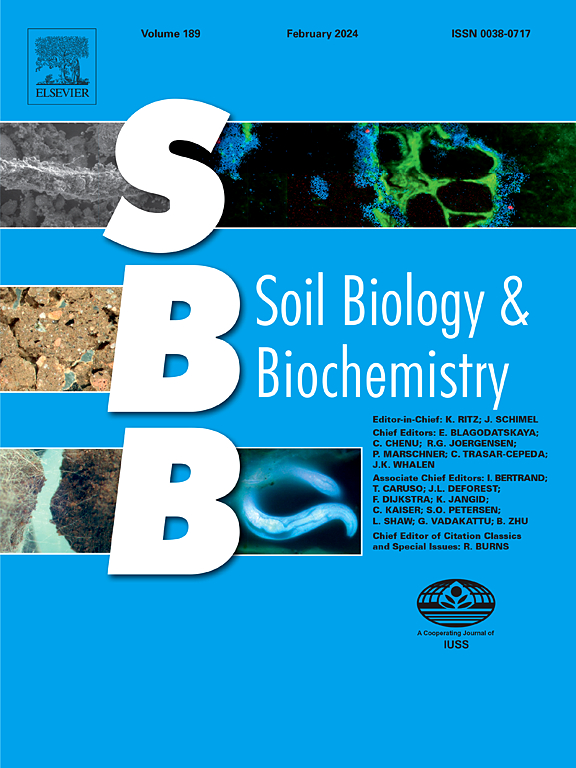Microbial functional trait predicts soil organic carbon across soil aggregates in northeastern China
IF 10.3
1区 农林科学
Q1 SOIL SCIENCE
引用次数: 0
Abstract
Soil aggregates offer diverse habitats for microorganisms, which can be characterized by variations in the microbial 16S rRNA gene operon (rrn) copy number. The rrn copy number is considered a functional trait that is indicative of microbial growth rates and organic matter availability, which is linked to soil fertility, nutrient cycling, and ecosystem health. However, the impact of soil aggregate fraction on microbial functional traits, such as the rrn copy number, remains unclear. This study revealed that microbial taxonomic composition differs significantly according to the soil aggregate fraction, with a higher community-level rrn copy numbers in microaggregates, potentially indicating the prevalence of microbial r-strategists, compared to macroaggregates and silt+clay fractions. Additionally, the strong positive correlation between soil organic carbon and community-level rrn copy number suggested that the rrn copy number is a meaningful functional trait of soil organic carbon availability. Overall, this study provides new insights into how soil aggregate fractions may shape the life-history strategies of microbial communities, soil organic matter content and promote soil health.
微生物功能性状对东北土壤团聚体土壤有机碳的预测
土壤团聚体为微生物提供了多样化的栖息地,其特点是微生物 16S rRNA 基因操作子(rrn)拷贝数的变化,这是一种重要的功能特征,表明微生物的生长速度和有机物的可用性,对提高土壤肥力、养分循环和生态系统健康至关重要。然而,土壤集聚分层对微生物功能特征(如 rrn 拷贝数所反映的)的影响仍不清楚。本研究发现,微生物分类组成在土壤团聚体分层中存在显著差异,微团聚体的群落级rrn拷贝数较高,这可能表明与大团聚体和粉砂+粘土组分相比,微生物r战略家更为普遍。此外,土壤有机碳与群落级rrn拷贝数之间的强正相关性表明,rrn拷贝数是反映土壤有机碳可用性的一个有意义的功能特征。总之,这一发现为了解土壤团聚体如何影响微生物群落的生活史策略、土壤有机质含量以及促进土壤健康提供了新的视角。
本文章由计算机程序翻译,如有差异,请以英文原文为准。
求助全文
约1分钟内获得全文
求助全文
来源期刊

Soil Biology & Biochemistry
农林科学-土壤科学
CiteScore
16.90
自引率
9.30%
发文量
312
审稿时长
49 days
期刊介绍:
Soil Biology & Biochemistry publishes original research articles of international significance focusing on biological processes in soil and their applications to soil and environmental quality. Major topics include the ecology and biochemical processes of soil organisms, their effects on the environment, and interactions with plants. The journal also welcomes state-of-the-art reviews and discussions on contemporary research in soil biology and biochemistry.
 求助内容:
求助内容: 应助结果提醒方式:
应助结果提醒方式:


